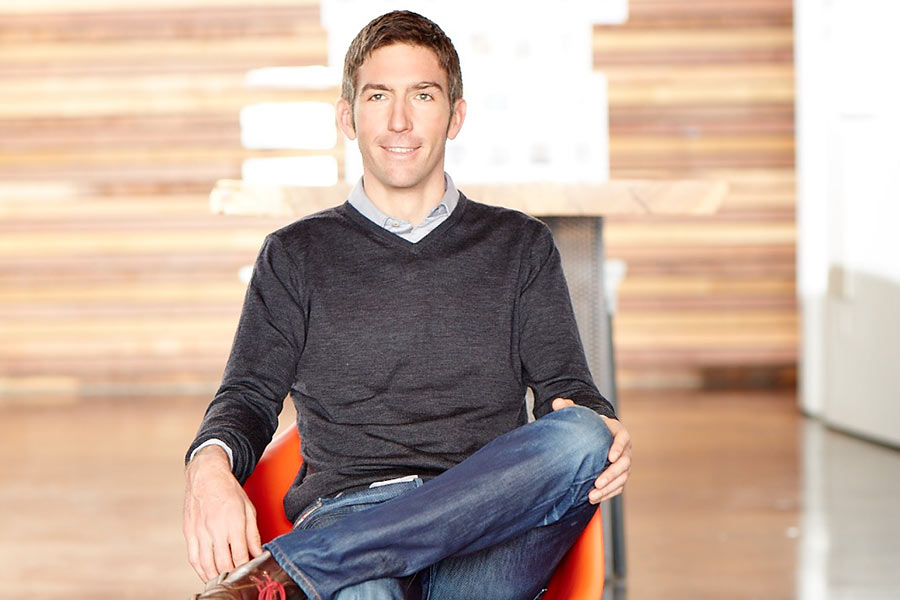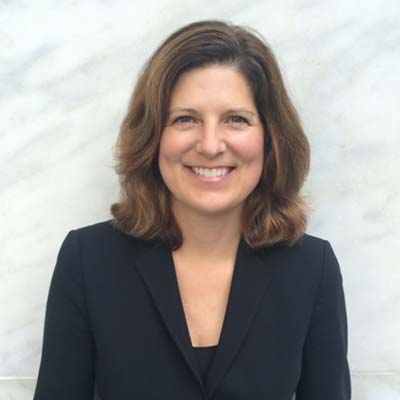 With an approach as new as impact investing, corporate leaders often have to blaze their own trails, sometimes with a few twists and turns.
With an approach as new as impact investing, corporate leaders often have to blaze their own trails, sometimes with a few twists and turns.
Take, for example Joe Speicher (pictured above). As a freshly-minted undergraduate, he headed to Wall Street with many of his brightest peers. But after what he describes as a “Eureka moment,” Speicher shifted gears, joined the Peace Corps and hasn’t looked back. He went on to earn a master’s degree at Columbia and then launched the nonprofit Living Goods, which uses the “Avon Calling” door-to-door sales model to build a health products marketplace in East Africa and Myanmar.
If you like this, subscribe here for more stories that Inspire The Future.
Today, Speicher applies this breadth of expertise to his role as Executive Director of the Autodesk Foundation, the philanthropic arm of design software giant Autodesk. The company makes software for the architecture, engineering, construction, manufacturing, media, and entertainment industries. Launched in 2014, the Foundation’s mission is to deliver impact by supporting the design and creation of innovative solutions to the world’s most pressing social and environmental challenges.
Speicher recently discussed some of the key principles the team at Autodesk Foundation applies to maximize the impact of their philanthropy:
ALIGN business and philanthropy
“Corporate philanthropy fulfills its promise when it aligns with the business and essentially becomes part of the DNA of the company,” says Speicher. “There’s so much value to be had by being closely tied with the company and leveraging those ties.”
Autodesk has set up its corporate philanthropy so that there’s a back-and-forth between the business and the charity, based on three buckets of value-additive services—financial capital through grants and investments; intellectual capital through software and technical assistance; and human capital through leveraging the expertise of employees. One example is the foundation’s work with Build Change, a nonprofit that helps communities in developing countries ‘build back better’ after natural disasters. In Nepal, which suffered a devastating earthquake in 2015, Autodesk employees helped Build Change streamline its building retrofit analysis from 3 days down to 3 hours using software scripts and plug-ins.
“It’s leveraging our human and intellectual capital to offer societal value,” he says. “And I think that’s the highest and best use of corporate philanthropy.”
INSPIRE and be inspired
“We are a company that is genuinely committed to doing good things, and we’ve put resources towards that end. In some ways, providing a ‘greater corporate cause’ is becoming table stakes for companies, but for our employees—particularly Millennials and Gen Z-ers—it’s critically important.”
In that vein, Autodesk Foundation taps the company’s design expertise and applies it in the field with “impact trips.” Several times a year, employees engage locally and globally in communities and frequently, “they come back with new product ideas or solutions,” Speicher says. “It’s actually feeding back into potential product opportunities.” Autodesk employees also come together one month each year to log thousands of volunteer hours supporting activities across the globe, such as putting together 3D printed prosthetic hands, digitally mapping remote at-risk communities, and packaging meals for schools, orphanages and crisis-relief programs. The Foundation matches employee charitable donations up to $3,000 per year and offers 48 hours of volunteer time per year.
That generosity inspires Speicher, whose impact investing mentors include Kevin Starr of the Mulago Foundation and Breakthrough Energy Ventures, which was initially established by Microsoft Founder Bill Gates as a vehicle for investing in climate R&D.
INCUBATE Ideas and opportunities
“The Foundation’s opportunity is to help the company think more about our role in society. And that means seeding our work across all business units in the company and showing that shareholder return and societal value can be one and the same.”
Sub-Saharan Africa, a big focus for the Foundation, may be one area where philanthropic insights from the Foundation trickle up to the business. With the Foundation’s help, Christian Benimana, who runs the Africa Design Center in Rwanda, spoke at Autodesk’s user conference two years ago on the built environment in sub-Saharan Africa. And a task force within the company is shaping an Africa strategy.
Potential new markets are also bubbling up in renewable energy and other cutting-edge areas which are supported through Autodesk’s philanthropic work. By taking the risks that the public or private sector can’t or won’t take and using its patient, long-term capital, the Foundation is seeking to build a path to scalability for emerging markets and low carbon technologies.
“So many of the world’s future challenges are design challenges. The implications for urban systems, for manufacturing and industrial production, for the built environment, are just enormous,” he said. “And so, the more we can be thinking about these things and get out ahead of them as opposed to being responsive to them, I think that is such an enormous opportunity for us.”

PARTNER for a powerful philanthropic portfolio
“We align our unique technical know-how with our partners, and find and fund ‘lighthouse examples,’ opportunities to seed the market with transformative technologies and solutions that can help light the way for others.”
Just four years old, the Autodesk Foundation is small relative to older, more established foundations. But the power of effective partnerships, says Speicher, is helping the foundation make an impact beyond its size and stay focused on its core mission.
One partner whose impact epitomizes the Foundation’s focus on supporting the design of creative solutions is MASS Design Group, a 501(c)(3) architecture firm, with offices in Boston and Kigali. The firm recently completed the sublime National Memorial for Peace and Justice in Montgomery, Alabama, but some of its most ground-breaking work has occurred with Paul Farmer, an American physician who is known for his humanitarian work providing suitable health care to under-resourced areas in developing countries.
“MASS Group is amazing. They worked with Farmer to build Butaro District Hospital in rural Rwanda, one of the most beautiful hospitals on the planet,” says Speicher. “And it’s a lighthouse example of how architecture needs to change to take into account the specific users.”
Autodesk Foundation supports MASS Design via ImpactAssets, its impact-focused donor advised fund. Through the fund, the Foundation makes complex grant making and private debt and equity impact investments, such as it’s recent investment in Closed Loop Ventures. It’s also able to leverage a shared philanthropic infrastructure with more than 1,000 individuals and organizations that also partner with ImpactAssets.
For Speicher, Autodesk Foundation’s impact investing success cuts across the organization. Autodesk leadership understands the strengths (and limitations) of philanthropy and charitable vehicles and integrates Foundation leaders into discussions about the future of the company. “We need a new model of corporate philanthropy that embeds charitable and sustainable outcomes into the DNA of daily operations—recognizing that this is good for business and society,” Speicher writes in a Fast Company article. Corporations can transform corporate social responsibility from a cost center to a value center, but “you need to know what philanthropy can and can’t do, and then ensure that it’s engaged from a strategic perspective.”
If you like this, subscribe here for more stories that Inspire The Future.




































